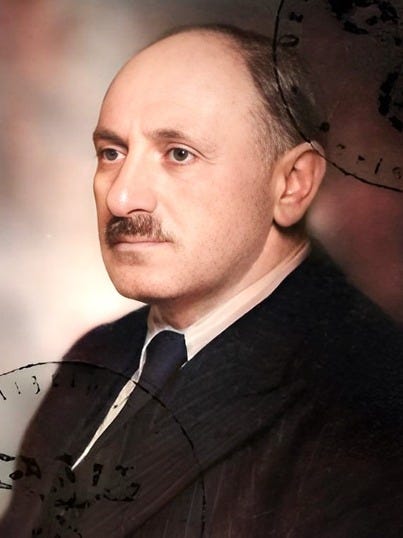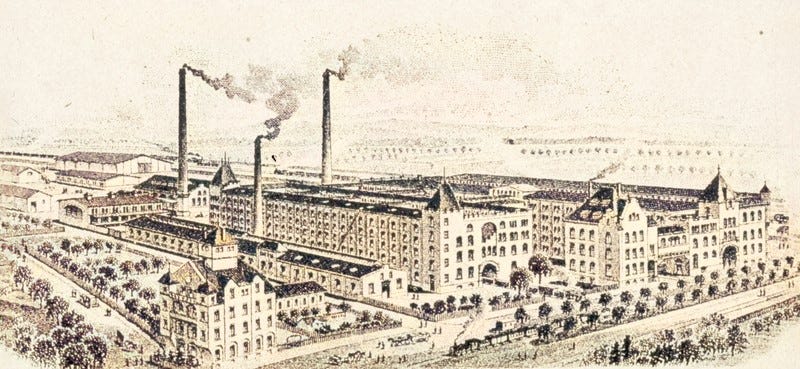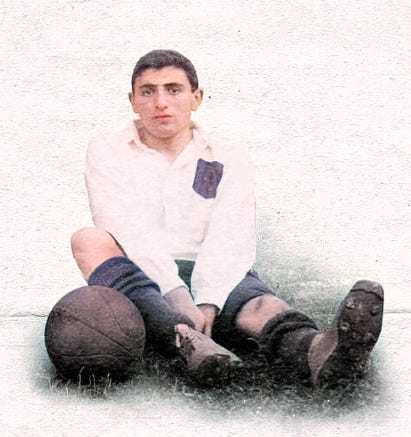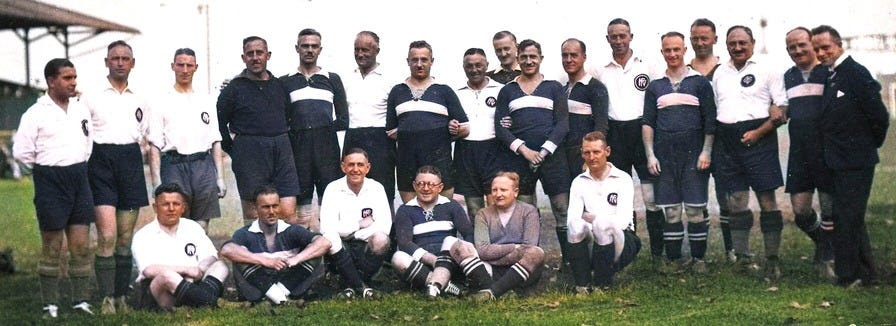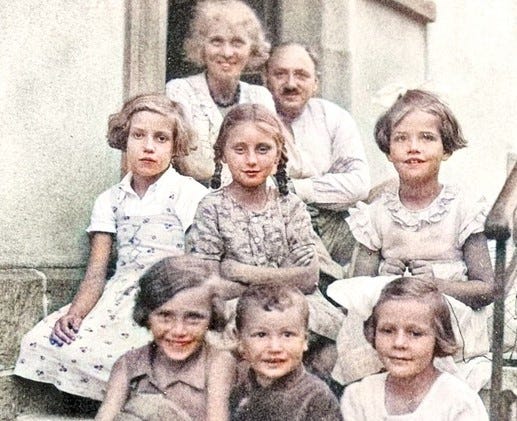Remembering the Legend Who Was Julius Hirsch
Upon his accession to power, in 1933, Adolf Hitler, as then-Chancellor of Germany, initiated the so-called “Aryanization” of all German sporting activities.
Shortly thereafter, the German Football Association ordered the removal of all Jews from official club positions – thus resulting in a nationwide purge of Jewish coaches, board members, and managers.
While many then sought to emigrate, Julius Hirsch was one sporting legend who resolved that “no man nor his diktats” would force him to leave his Fatherland…
Born on this day, in 1892, Julius burst onto the professional footballing scene at the young and spirited age of 17.
As an attacking striker for Karlsruhe FV, his goals led them to championship victory and, as the first-ever Jewish player to be selected for his national team, his incredible scoring prowess won him adulation from all four corners of Germany.
Despite being granted a military exemption, when Kaiser Wilhelm declared war in August 1914, Julius was determined to fulfill his patriotic duty…
Following in the footsteps of his older brothers, he enlisted with the Royal Bavarian Landwehr; whose No. 12 Infantry Regiment, he distinguished himself with over four years of brutal fighting.

At the war’s end, he returned home a venerated hero, with an Iron Cross pinned to his chest; and yet, none of his heroics were to count for anything in the eyes of Adolf Hitler and his National Socialists…
To them, Julius was the absolute antithesis of their “Aryan ideal”; and so, had to be “expunged from the nation’s psyche”.
By 1938, his name had all but been erased from society; but even then, Julius clung to his heartfelt belief that “decent people will come to their senses, and do something to turn the tide” against the Nazis.
Far from turning, however, the fierce and sudden outpouring of anti-Semitic violence during “Kristallnacht” not only vindicated that there was no place for Jews in Hitler’s Germany but, soon made Julius realize, it was no longer safe for his cherished family to remain by his side.
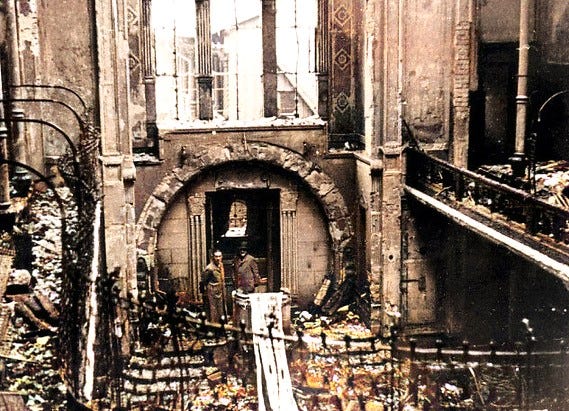
Thus, to protect them, he made the heartrending decision to divorce his beloved Christian wife, Ellen, so that she and their two dearest children could revert to her maiden name and, he prayed, “be spared from the anti-Jewish blood-shed.”
Several years later, in March 1943, a letter from Julius landed on their doorstep, telling them:
“Not to worry, my darlings. I am well, and will eventually reach Upper Silesia…”
There, his final destination was Auschwitz, where, almost immediately upon arrival, “Europe’s most gifted number 11”, was murdered in the gas chambers.
When news of his tragic end reached one of his surviving Jewish teammates, Gottfried Fuchs, the latter expressed his sincere hope that Julius would be “remembered as more than a talented footballer…”
“‘Juller’ wasn’t just a great sportsman”, Gottfried said.
“He was a German-Jewish patriot, who gave his life for the country he adored.”
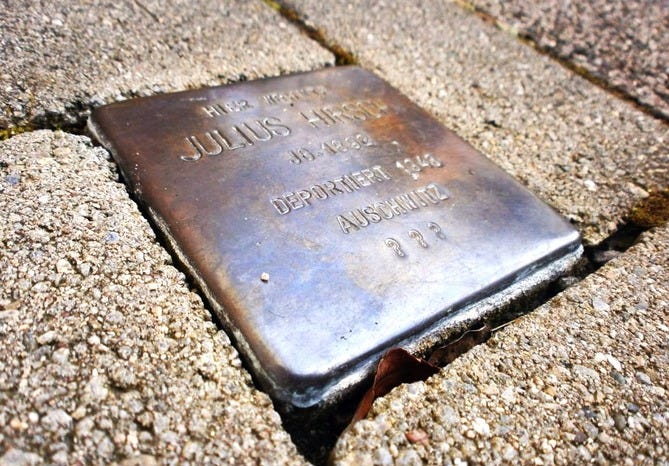
Addendum 1: -
Here, some of the more than 30,000 Jews who were seized from their homes during the “Kristallnacht” pogrom can be seen being marched through the crowded streets of Baden-Baden with a Magen David sign that reads:
“GOTT VERGIBT UNS NICHT!”, meaning, “GOD DOES NOT FORGIVE US!”
Addendum 2: -
In the immediate aftermath of the burning, looting, and killing during the “Kristallnacht” pogrom, Hitler and his National Socialists enacted a whole new raft of anti-Semitic policies designed to humiliate and isolate Jews across all four corners of the dictator’s Reich.
Here Jewish women can be seen in the city of Hitler’s childhood – Linz, Austria – where they were paraded with giant placards around their necks bearing the words:
“ICH BIN KEIN TEIL DER NATIONALEN GEMEINSCHAFT !”, meaning, “I AM NOT PART OF THE NATIONAL COMMUNITY !”
Addendum 3: -
Here, German gentiles can be seen two days after the “Kristallnacht” rampage, on November 12th, 1938, admiring the devastation wrought upon a Jewish-owned business.
On the same day, Adolf Hitler’s Commander-in-Chief of the Luftwaffe – Generalfeldmarschall Hermann Göring – organized a conference of high-ranking National Socialists to discuss “solutions” designed to “address the significant economic damage” caused by his government’s state-sponsored pogrom.
Concluding that “the Jews only had themselves to blame” for “Kristallnacht”, it was decided that the Jewish people had to “pay recompense” to the tune of 1 billion Reichsmarks.
Equating to a sum of just over $400 million US Dollars at the time, the figure would amount to nearly $8.8 billion Dollars today.
Addendum 4: -
In the lead up to “Kristallnacht, all Jews in Hitler’s Reich were mandated to carry identity cards stamped with the letter “J” for “Jude”. As can be seen in this photograph showing the card that belonged to Julius, all Jewish men were made to add the name, “Israel”, to their birth names. Similarly, all Jewish women were made to add “Sara” to theirs.
Addendum 5: -
When the Great Depression caused the collapse of his company, Julius found a job as an accountant at the Jewish-owned Vogel & Schnurmann textile factory.
Seen here as an artist’s impression, the business was the largest and most successful of its kind; only then for its forced “Aryanization”, in 1938, to result in its mandated sale, and its subsequent decline.
Sold far below market value to an “Aryan” businessman, the latter fired Julius and his Jewish colleagues, thus leaving them with little prospect of securing new employment in Hitler’s Reich.
Determined to provide for his family, Julius accepted an invitation to stay with his sister, Rosa, in France, where he hoped to find work as a coach.
Discovering, however, that the French were unwilling to employ Jewish refugees, he returned to Germany in early 1939.
Then press-ganged into quarrying stone, he endured four years of horrific forced labor, before being summoned for what he believed was the beginning of “a new assignment in Upper Silesia…”
Despite being offered safe passage to Switzerland by an ex-footballing comrade, Julius rejected the opportunity.
Stating that it was his “duty to go with dignity”, he boarded a train destined for Auschwitz on March 1st, 1943.
Addendum 6: -
Jewish slave labor in a quarry similar to the one Julius was forced to work in before his deportation to Auschwitz. The men seen here are being made to quarry stone for Hitler’s grandiose building projects. Untold numbers perished in the process.
Addendum 7: -
In September 1941, Adolf Hitler authorized the first mass deportation Jews from the Greater German Reich.
“Resettled” in overcrowded, disease-ridden ghettos in Eastern Europe, they were later transported either to killing sites, where they were shot in their masses, or, to extermination camps, where they were gassed upon arrival.
Although Julius was selected to be deported with the first convoy of German Jewish families (seen here), he was spared from this “Juden Aktion” owing to his marriage to Ellen – a German gentile.
Addendum 8: -
Julius as an up-and-coming striker with Karlsruhe Fußball Verein. Joining the club soon after his tenth birthday, “Juller”, as he was fondly known by his teammates, was selected to play professionally for Karlsruhe FV at just 17 years of age.
Addendum 9: -
A young and dapper Julius pictured (sitting on the front row, center) with his teammates of Karlsruhe Fußball Verein, shortly after they won the German Football Championship in 1910. Gottfried Fuchs, his close friend and fellow striker, can be seen second from right, wearing the black suit and striped tie.
Addendum 10: -
Julius scoring a winning header for Karlsruhe Fußball Verein in 1912.
Addendum 11: -
In addition to leading Karlsruhe Fußball Verein to championship victory, Julius did the same for Spielvereinigung Greuther Fürth. Here, he can be seen playing for SpVgg Greuther Fürth after signing for them in 1913.
Addendum 12: -
Julius pictured (far left) as the first Jewish player to be selected for his national team. Shortly after this photograph was taken, in the summer of 1912, Julius made footballing history by becoming the first-ever German to score four times in one game.
Addendum 13: -
Julius pictured (third from right) shortly before Adolf Hitler’s “Aryanization” of German sporting activities forced him to resign as a playing coach for Karlsruhe Fußball Verein in 1933.
On the day he learned that his beloved club had “gladly and definitively” placed itself “at the disposal of the national government’s efforts” to remove its Jewish members, Julius announced his resignation to the club’s board with the following letter:
"Dear Sirs. I read today, in the Stuttgart Sports Report, that the big clubs, including Karlsruhe FV, have made a decision to remove Jews from their organizations…
As you know, I have been a member of KFV since 1902, and have always faithfully and honestly placed my feeble strength at its disposal.
Unfortunately, it is with an emotional heart that I have to announce my resignation…
However, I would also like to say that, even in this brutal German nation – so hated around the world – there are decent patriotic people – including German Jews – who have demonstrated their good faith through their actions and their blood-shed.”
Addendum 14: -
On September 13th, 2005, the German Football Association announced the creation of an award honoring those who go above and beyond to defend democracy, humanity, and liberty. Named in blessed memory of Julius, the “Julius Hirsch Prize” (seen here) is co-chaired by his grandson, Andreas.
Addendum 15: -
In early 2014, the Lord Mayor of Fürth, Dr. Thomas Jung, announced that a new sports centre was to be built and named in honor of Julius.
Standing as a permanent tribute to his “championship-winning contribution” while playing as a striker for the city’s home football team – Spielvereinigung Greuther Fürth – the “Julius Hirsch Sports Centre” (seen here) opened its doors to the public in 2017.
Addendum 16: -
Ahead of the 75th anniversary marking the liberation of Auschwitz, the renowned British-Israeli street artist, Solomon Souza, was asked by the-then owner of Chelsea Football Club, Roman Abramovich, to create a mural commemorating the event.
Unveiled on January 27th, 2020, Solomon’s work of art depicts Julius alongside another two footballing icons: Ron Jones and Árpád Weisz.
Hungarian-Jewish-born Árpád played for and managed some of the greatest teams in Europe, before being deported to Auschwitz with his beloved wife, Elena, and their two children, Roberto and Clara, in 1942.
Whereas they were ruthlessly murdered on arrival, Árpád endured nearly two years of horrific slave labor, until he too was killed in 1944.
As for Ron, the former British Army soldier was captured while fighting in North Africa, and then transferred to a sub-camp of Oświęcim for prisoners of war.
There, he became known as “the goalkeeper of Auschwitz”, playing repeated games against his German guards.
Liberated by the Russians in January 1945, Ron later returned to his native Wales, where, through to his passing, aged 102, he not only raised funds for Britain’s Armed Forces community, but also, for Holocaust survivors and their families.
Addendum 17: -
Julius’ surviving Jewish teammate – Gottfried Fuchs – in conversation with a fellow footballing legend – “Pelé”.
Beginning his playing career in 1904, as a sixteen-year-old striker for Düsseldorfer Sport-Club 1899, Gottfried joined Julius at Karlsruhe Fußball Verein in 1906.
There, the “dynamic duo” led the club to championship victory in 1910, before going on to make sporting history, respectively, when, soon after Julius became the first-ever German to score four goals in one game, Gottfried more than doubled his record by scoring ten.
When Kaiser Wilhelm declared war in August 1914, Gottfried also volunteered to fight for his Fatherland.
Enlisting as an artilleryman, he served for the duration of the conflict, winning both an Iron Cross, and a battlefield commission.
Escaping first to France in 1937, and then onward to Great Britain, Gottfried eventually settled his family in Montreal, Canada, where he built a new life for them.
Although he made several return trips to post-war Germany, he never ventured back to Karlsruhe.
Speaking shortly before his passing, aged 83, in 1972, he explained that he had “no desire to go there…”
“‘Juller’ was like a brother to me”, Gottfried said. “Karlsruhe helped to murder him.”
Addendum 18: -
Julius with his beloved Christian wife, Ellen, on the steps of their family home in Karlsruher.
There, they raised their two cherished children, Esther (seen sitting in front of Ellen, on the left), and Heinhold (seen sitting in the front row). Also pictured are four childhood friends of Esther and Heinhold.
Classified as being “Mischlinge ersten Grades”, or, “Half breeds of the First Degree”, Esther and Heinhold faced the same anti-Semitic persecution as their father.
Dismissed from their “Aryan” Protestant school in 1936, their parents then transferred them to a Jewish-run establishment, where they continued their education until the schooling of all Jewish children was outlawed in 1941.
In the dying days of Hitler’s Reich, both Esther and Heinhold were taken from their family home, and deported to the horrors of Theresienstadt.
Notwithstanding the hardship and suffering they endured there, the starved and beaten siblings were eventually liberated by the Russians, and reunited with their mother in June 1945.



